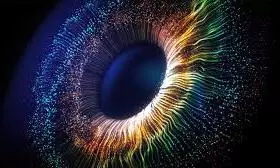
Scientists reveal ‘olo’ – a new colour humans can’t naturally see
text_fieldsResearchers have discovered a new colour named olo - a hue that exists beyond the range of normal human vision.
The findings, published in Science Advances on April 18, detail how the colour was made visible to just five individuals through a precise and experimental technique involving laser stimulation of the eye.
The researchers, using highly controlled laser pulses, targeted the retina to artificially activate specific photoreceptors, effectively pushing the brain’s perception into uncharted territory. This manipulation allowed participants to perceive olo, which they described as resembling peacock blue or teal but with an intensity and vibrancy that surpassed anything they'd ever seen.
“It was unlike anything we’ve experienced before,” said Ren Ng, electrical engineer at the University of California, Berkeley. “The saturation was off the charts.”
Vision scientist Austin Roorda, who was also involved in the study, emphasised that no existing digital display can replicate the true appearance of olo. “You simply can’t convey this colour in an image or on a screen,” he said. “What we can show is only a dull version of the actual experience.”
To understand the science behind this, it helps to look at how human eyes perceive colour. Light is detected by cone cells in the retina, which come in three types - sensitive to long (L), medium (M), and short (S) wavelengths, corresponding to red, green, and blue light. While everyday colours are combinations of signals from these cones, olo was produced by directly stimulating the underused M cones in a way that natural light cannot.
The scientists used retinal scans to identify M cones in volunteers and then directed laser flashes precisely at these cells. This technique allowed the brain to interpret a new and never-before-seen colour signal.
Despite the excitement, the team confirmed that olo will remain a lab-only phenomenon for the foreseeable future. “This isn’t something that’ll show up on TV screens or in virtual reality,” the researchers stated. “It’s far beyond what current technology can replicate.”






